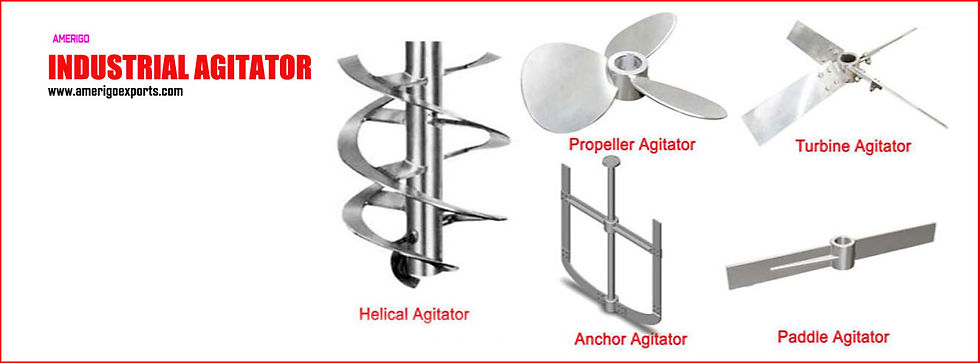Working principle of FLOWGUARD PULSATION DAMPENERS
- Amerigo Exports
- May 31, 2024
- 2 min read
FLOWGUARD PULSATION DAMPENERS, also known as pulsation attenuators or pulsation suppressors, are devices used in fluid systems to reduce or eliminate pulsations caused by reciprocating pumps, compressors, or other sources. These pulsations can lead to vibration, noise, and wear in piping systems and equipment. Here’s a detailed explanation of their working principle and types:
Working Principle
Absorbing Pulsations: Pulsation dampeners absorb the energy of the fluid pulsations, thereby reducing the amplitude of pressure fluctuations. This is typically achieved through the use of a compressible medium (gas or elastomeric material) inside the dampener.
Volume Compensation: When a pulsation occurs, the fluid enters the dampener and compresses the gas or elastomeric bladder, diaphragm, or piston inside. This compression allows the fluid volume to increase slightly within the dampener, compensating for the pulsation.
Energy Dissipation: The energy from the pulsation is dissipated as the gas or elastomer compresses and then expands back to its original state, smoothing out the flow and pressure variations.
Types of Pulsation Dampeners
Bladder Type:
Structure: Contains an internal elastomeric bladder filled with gas (usually nitrogen) inside a metal shell.
Operation: The bladder separates the gas from the process fluid. When a pulsation occurs, the fluid compresses the gas-filled bladder, absorbing the pulsation energy.
Applications: Common in hydraulic systems and reciprocating pumps.
Diaphragm Type:
Structure: Features a flexible diaphragm separating the gas chamber from the fluid chamber.
Operation: The diaphragm flexes in response to pulsations, compressing the gas on the other side. This type is useful for more aggressive or corrosive fluids.
Applications: Suitable for chemical processing and food industries.
Piston Type:
Structure: Contains a piston that moves within a cylinder. The piston separates the gas from the fluid.
Operation: The piston moves back and forth to accommodate pressure changes, compressing the gas and absorbing pulsation energy.
Applications: Typically used in high-pressure systems.
Hydraulic Accumulator:
Structure: Similar to bladder and diaphragm types, but designed specifically for hydraulic systems.
Operation: Uses either a bladder, diaphragm, or piston to separate the gas from the hydraulic fluid.
Applications: Hydraulic systems in industrial and mobile equipment.
Installation and Maintenance
Location: Installed as close as possible to the source of pulsation (e.g., near pump discharge).
Sizing: Proper sizing is critical for effective dampening. The volume and pressure rating should match the system requirements.
Pre-Charging: Gas-filled dampeners need to be pre-charged with the appropriate amount of gas pressure, typically around 80% of the system pressure.
Maintenance: Regular checks for leaks, gas pre-charge pressure, and overall condition are necessary to ensure effective operation.
Advantages
Reduced Vibration and Noise: Minimizes the vibration and noise in piping systems, leading to a quieter operation.
Extended Equipment Life: Reduces wear and tear on components, extending the lifespan of pumps, pipes, and fittings.
Improved System Performance: Provides smoother fluid flow, which can improve the overall efficiency and performance of the fluid system.
In summary, pulsation dampeners are essential components in various fluid systems, designed to smooth out pressure variations, reduce mechanical stress, and enhance overall system reliability and performance. Visit https://www.amerigoexports.com/dampner.html





Comments